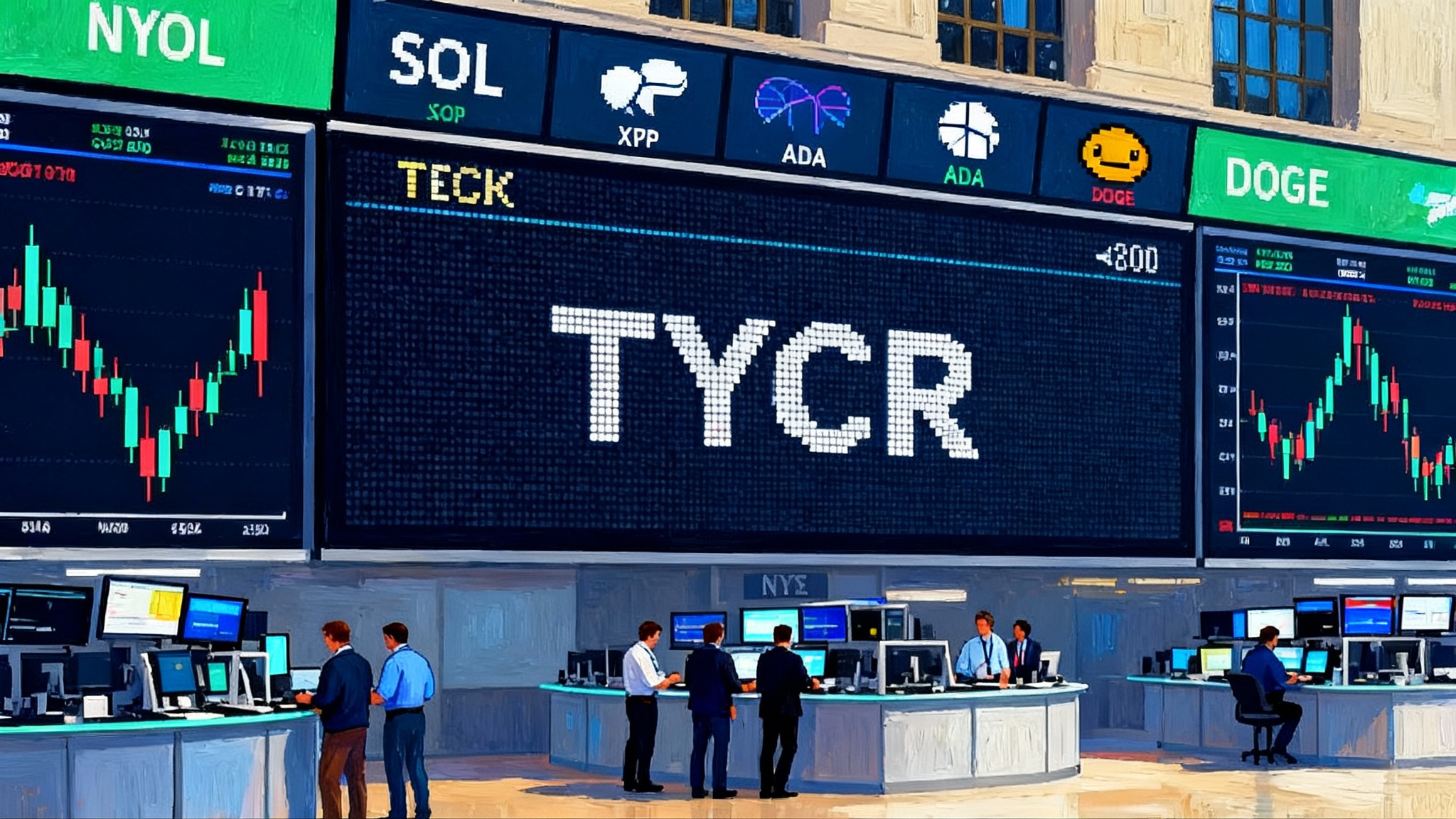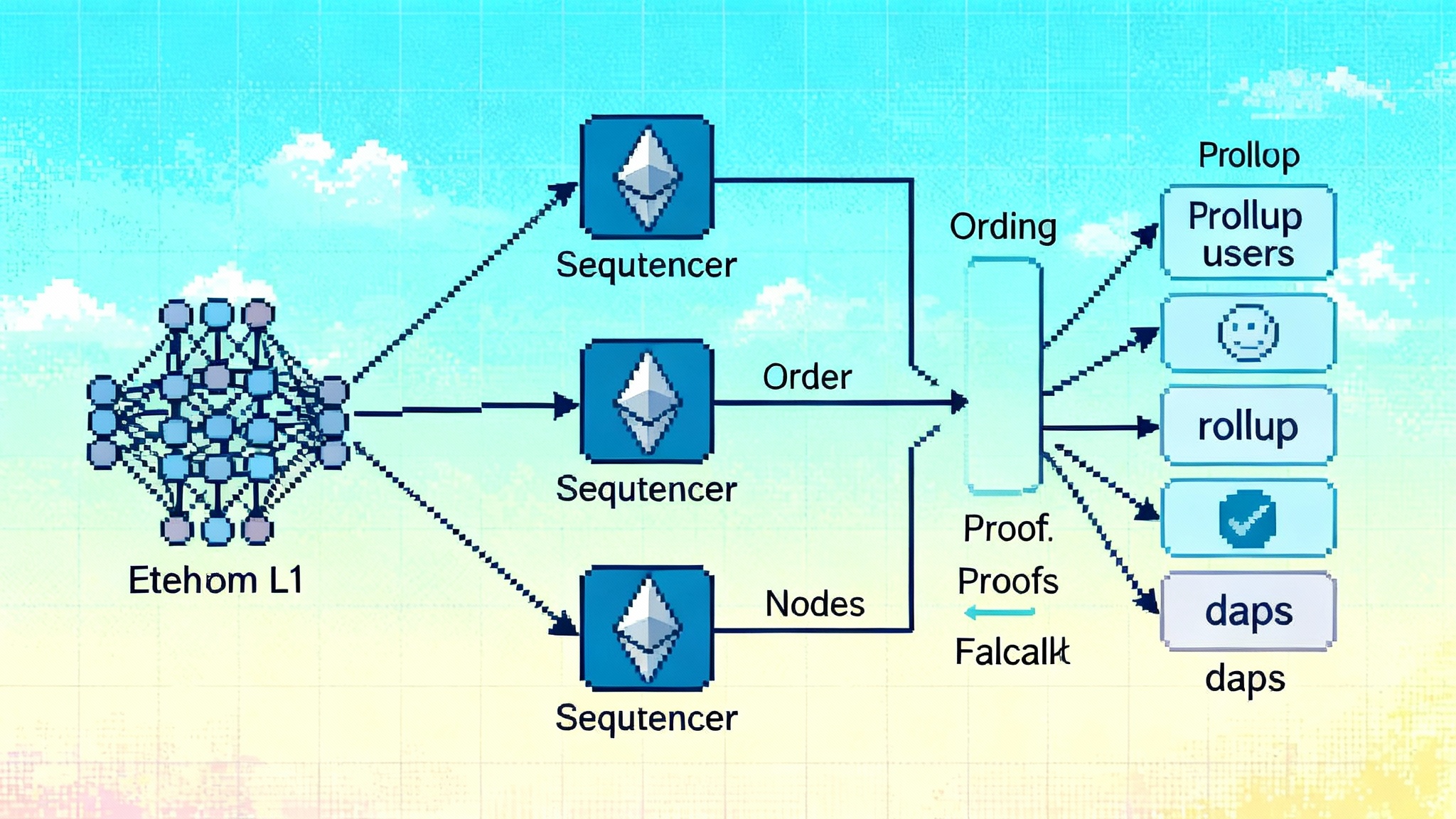SEC clears generic ETP rules as altcoin ETFs line up
On September 17, 2025, the SEC approved generic listing standards for commodity ETPs, giving U.S. spot crypto funds a faster path to market. With a multi-coin ETF already live, SOL and XRP products could arrive as soon as October, reshaping liquidity and on-chain behavior.

What just changed on September 17
In a single vote on September 17, 2025, the SEC gave national exchanges the ability to list commodity-based exchange traded products that meet new generic standards, including products that hold spot digital assets. Instead of every product slogging through a bespoke review, an exchange can list a qualifying ETP under its rulebook and post required details shortly after trading begins. Commissioner Hester Peirce summarized the significance in her statement on the Commission’s approval of generic listing standards, noting that generic standards replace case-by-case approvals with a rules-based pathway.
This is a structural shift. It accelerates time to market, standardizes surveillance and disclosure expectations, and moves the bottleneck away from Section 19(b) exchange-rule approvals toward the usual Securities Act registration process. In practice, crypto issuers that already filed or prepped registration statements can now coordinate with their chosen exchange and market makers on a near-term launch timeline.
Grayscale fires the starting gun
On September 19, 2025, Grayscale converted its long-running large-cap crypto vehicle and began trading the Grayscale CoinDesk Crypto 5 ETF under ticker GDLC on NYSE Arca. The product tracks the CoinDesk 5 Index and holds Bitcoin, Ether, XRP, Solana, and Cardano, offering a single-ticket way to capture the lion’s share of crypto’s market cap. Grayscale’s own release framed the launch as the first U.S. multi-asset spot crypto ETP, and it arrived almost immediately after the SEC’s action, as detailed in the Grayscale CoinDesk Crypto 5 ETF announcement.
The timing matters. A live, multi-coin product sets an index-based reference for allocators and creates a benchmark for market structure. It also signals that the operational plumbing, from custody to creation and redemption, is ready for more tickers. Solana, which is pushing toward faster finality in Solana targets sub-150ms finality, is a notable beneficiary if single-asset products follow quickly.
The near-term: SOL and XRP ETFs in October
With generic listing standards in place, several single-asset funds that hold Solana and XRP can list once their registration statements are effective and the exchange posts the required product details. October is now a live window. That does not mean every product will be ready at once. Issuers still need finalized custodial arrangements, authorized participant agreements, and pricing dissemination that meets the exchange’s conditions. But the gating function has flipped from regulatory discretion to operational readiness.
Expect a sequence rather than a single big bang. Products that mirror the most liquid pairs on U.S. venues, and those with top-tier custodial coverage, will likely move first. XRP and SOL have the advantage of deep global spot and derivatives liquidity and long-standing inclusion in institutional indices. DOGE and ADA can follow on a slightly longer fuse if their issuers clear any last-mile questions and demonstrate that trading, custody, and pricing fit the exchange’s rule tests.
How liquidity could shift in weeks, not months
Market microstructure changes rapidly when ETFs arrive. Here is what to watch over the next quarter:
- Primary flows drive secondary trading. Authorized participants create new ETF shares when demand rises. To hedge or assemble the basket, they buy the underlying coins across the venues with the deepest liquidity. That flow concentrates on U.S.-accessible exchanges during market hours, then ripples to offshore venues.
- Spreads tighten at the top of book. Market makers anchor to the ETF’s implied net asset value and hedge in the underlying spot. More competition at the quote can compress spreads on SOL and XRP pairs and improve displayed depth. The effect is strongest during U.S. hours and around the ETF’s close.
- Cash creations dominate at launch. Most crypto ETPs start with cash creations and redemptions. That channels fiat through brokers into coin purchases by APs and liquidity providers, which can increase spot turnover and lift correlated pairs. If any issuer introduces in-kind baskets later, underlying footprint could shift again, especially for coins with significant on-chain transfer costs.
- Cross-asset correlations rise. Once an index-like product trades, allocator flows often treat constituents as one risk bucket. That can push BTC, ETH, SOL, and XRP closer together on risk-on and risk-off days, and it can flatten idiosyncratic reactions to protocol news unless the news is material.
Staking, validator sets, and centralization pressures
The most consequential on-chain question is whether U.S. products will stake at launch. In the current environment, expect new U.S. spot ETFs to hold assets in qualified custody without staking. That choice has three effects:
- Lower network-wide staking ratios. If sizable SOL and ADA balances sit idle in cold storage, the global staking ratio declines at the margin. Lower staking ratios raise nominal yields for remaining stakers, which can attract more independent participants. The size of the shift depends on ETF assets under management and whether custodians delegate in the future.
- Validator concentration risk if delegation appears later. If custodians or issuers eventually permit delegation, they tend to select a small, vetted validator set to minimize operational risk. That concentrates vote power and stake rewards among a handful of large operators. Protocol communities can preempt this outcome by cultivating diverse, well-documented validator options and by publishing delegation policies that favor dispersion.
- Governance design choices matter more. Staking flows from new institutional holders will respond to clear governance guardrails. Solana, for example, can blunt concentration by encouraging stake pools that cap per-validator allocations and by highlighting validators with high performance but lower stake. Cardano can lean on its pledge and saturation parameters to limit super-pool dominance.
A coin-by-coin lens:
- Solana. SOL’s validator count and throughput story are strong, but leadership stake remains skewed to top operators. ETF custody without staking initially reduces the share of actively staked SOL. If delegation is introduced later, watch for short white lists, which could tilt block production weight. Builders can help by standardizing tooling for multi-signer validator operations, adding health metrics that make it easy for large custodians to diversify, and creating socialized slashing insurance for institutional delegates.
- Cardano. ADA’s parameter design moderates pool concentration through saturation, but large passive stake from custodians could still cluster in popular pools. Treasury-funded incentives for new or geographically diverse pools and better institutional onboarding for pledge mechanics can spread inflows.
- XRP and DOGE. Neither uses economic staking. For these assets, ETF growth affects validator dynamics indirectly through price, liquidity, and community funding. More stable secondary-market liquidity can enable longer planning horizons for infrastructure teams, which can improve node and relay diversity.
Index-driven market structure takes the wheel
Generic listing plus a live multi-coin ETF pushes crypto deeper into index-led behavior. Three features matter:
- Inclusion and weight rules become destiny. Products that track or benchmark to large-cap crypto indices will steer flows toward coins with high free float, strong custody support, and robust price discovery across surveilled venues. That creates a structural bid for the top layer and puts a quality premium on coins that can meet rulebook tests.
- Rebalance calendars create tradeable patterns. If funds rebalance quarterly to maintain market-cap weights, the days around reference snapshots can see predictable rotations. Traders will estimate adds and cuts, pre-position inventories, and supply liquidity into the close. The patterns are subtle at first, then grow as assets scale.
- The long tail gets crowded out. Coins outside the top five will compete for a smaller discretionary pocket. Some will pivot to narrative catalysts or yield mechanics to attract attention. Others will pursue index eligibility by hardening custody, improving market surveillance support, and encouraging deeper regulated venue trading.
Traditional market venues are moving in parallel, as seen in Nasdaq’s tokenized stocks listing plan, which highlights how index-ready assets attract flows once rulebooks and plumbing are in place.
What builders, traders, and protocols should do in the next quarter
A clear playbook helps teams catch the first wave rather than chase it.
For builders and project foundations:
- Publish an ETF readiness dashboard. Cover custody integrations, venue coverage, index eligibility, and price feed robustness. Make it easy for issuers and APs to evaluate operational risks.
- Treat validators as go-to-market partners. Curate and continuously update a list of independent validators with audited setups, geographic diversity, and clear performance stats. Offer co-marketing for pools that commit to stake dispersion.
- Harden data dissemination. Ensure reliable reference rates and robust on-chain oracles. ETF market makers will lean on accurate and resilient pricing, especially near the close. Reduce any single point of failure that could widen spreads.
- Clarify staking policies. If your protocol supports staking, publish institutional guides that explain key risks, delegation mechanics, and how to avoid concentration. Offer optional safeguards like soft caps per validator and community-monitored diversification targets.
For traders and market makers:
- Map the creation and redemption workflow. Identify which issuers rely on cash creates, who their authorized participants are, and which desks will warehouse inventory. Build relationships and lines to supply liquidity during stress.
- Track the implied basket cost. Model the cost to assemble underlying coins across venues versus the ETF’s intraday price. That model drives hedging and informs where to quote size. It also helps you spot temporary premiums and discounts.
- Pre-position around calendar catalysts. The next month will bring registration effectiveness updates, exchange product notices, and potential launch dates. Liquidity often thins ahead of first-trade days and around rebalances. Keep dry powder to monetize the microstructure dislocations.
- Watch U.S. close dynamics. U.S.-listed ETFs pull liquidity into the 3:30 to 4:00 p.m. Eastern window. Expect higher volumes, tighter spreads on constituents, and more predictable hedging flows then.
For protocols and validators:
- Propose a delegation diversity framework. Codify maximum stake per validator for any large delegator and publish a community-endorsed whitelist that is long by design. Encourage custodians to split stake across regions and clients.
- Invest in observability. Add public dashboards that track stake dispersion, validator performance, and client diversity, updated in near real time. Visibility helps custodians prove compliance with diversification policies.
- Engage with index providers. Eligibility often depends on free float, venue coverage, and pricing standards. Work with exchanges to improve listing quality and with custodians to support institutional cold storage and transfer protocols.
Teams tracking these milestones can benefit from a practical reporting workflow for policy and metrics to standardize updates across filings, exchange notices, and liquidity indicators.
ETF product design and trading infrastructure will decide the winners
Today’s crypto ETPs work more like commodity grantor trusts than ’40 Act equity ETFs. That shapes everything from fee structures to how creations occur. Issuers that deliver transparent creations, reliable daily basket files, and strong relationships with APs and market makers tend to see better spreads and deeper order books. Custodians that combine bank-grade controls with crypto-native transfer tooling can reduce settlement frictions and shrink hedging costs.
On the trading side, expect a surge in U.S. hours liquidity for SOL and XRP first, with ADA and DOGE likely to follow. Options makers will quickly build implied volatility surfaces for each new ETF, which creates a fresh avenue for hedging the underlying. Correlation products and index futures will not be far behind if demand firms up. That feedback loop reinforces index behavior and can crowd out idiosyncratic price discovery unless protocol news is truly catalytic.
Risks and unknowns to keep front of mind
- Registration effectiveness is still required. Generic listing removes one hurdle. It does not eliminate the need for an effective registration that satisfies disclosure and risk requirements.
- Staking policy remains fluid. U.S. products are unlikely to stake at launch. If and when policies evolve, delegation frameworks will need to preserve dispersion and avoid cartel-like validator sets.
- Surveillance and pricing will face tests. Sharp market moves expose weaknesses in reference rates, basket calculation, and late-day liquidity. Issuers and exchanges should run frequent fire drills with APs and market makers.
- Politics and leadership can shift tone. While a rules-based framework is now on the books, public statements from Commissioners and staff still shape how quickly new features, like options on altcoin ETFs or in-kind redemptions, make it through.
What to watch by Halloween
- Exchange notices of listing. Look for NYSE Arca, Nasdaq, and Cboe postings that a SOL or XRP product will commence trading. The timing of those notices often signals first-trade dates within days.
- Registration effectiveness updates. Issuers will file amendments and, when ready, receive effectiveness. That flips the last switch for a launch.
- AP rosters and custodians. Which banks and crypto specialists sign on matters for depth and spreads. Names on those lists hint at how much balance sheet will be available.
- Early-day volumes and spreads. If GDLC’s launch pattern repeats, expect a step function up in volume over the first week, then a settling period as hedging routines stabilize.
- Staking disclosures. Watch whether any issuer telegraphs future delegation plans. Protocol communities should be ready with a dispersion playbook.
The bottom line
The SEC’s generic listing approval on September 17 created a clear, rules-based lane for commodity-backed ETPs that hold spot crypto. Grayscale promptly proved the lane is open with a live multi-coin fund. That one-two punch means altcoin ETFs are no longer a long-term hypothesis. SOL and XRP products can plausibly arrive in October if their registrations are ready and exchange logistics line up, with ADA and DOGE likely in the queue. The near-term market will be shaped by index-led flows, ETF hedging patterns, and choices around staking. Builders, traders, and protocols that prepare now for the new liquidity regime will have the advantage in the days ahead.








